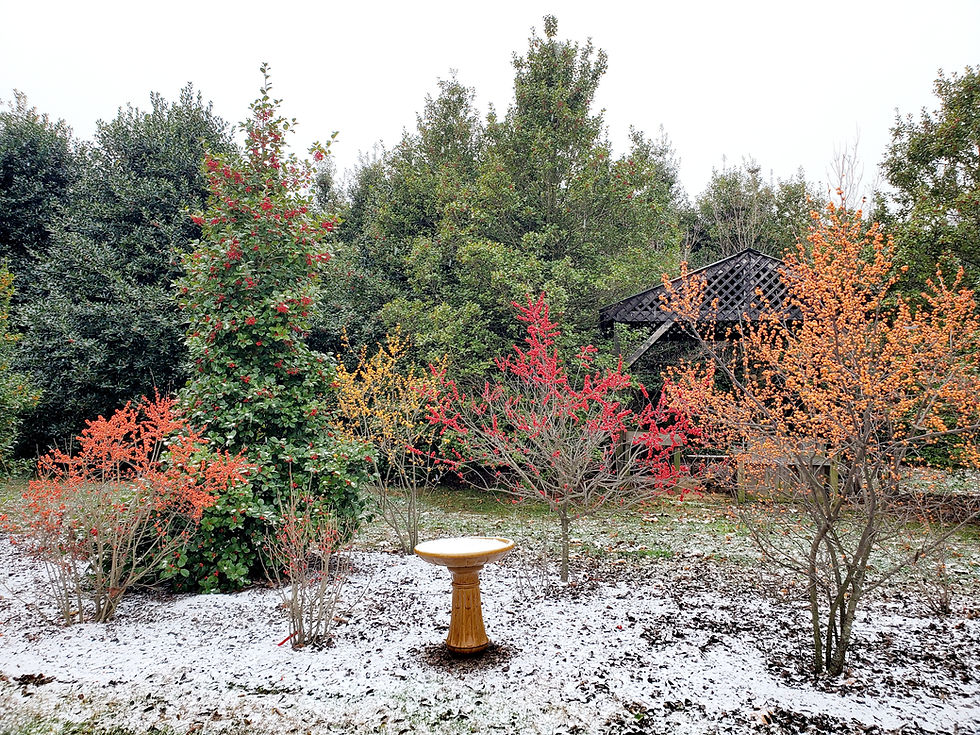Fruiting Now: Spicebush, a Super Native for Birds, Butterflies, and Gardeners Alike
- Sue Hunter
- Sep 25, 2025
- 2 min read
Updated: 2 days ago
Lindera benzoin, commonly known as Spicebush, is a native North American shrub that grows in the understory of wooded areas, along streams, and in moist thickets. It's known for its pleasing aromatic qualities, with the leaves, twigs, and berries emitting a spicy fragrance when crushed.
This graceful deciduous shrub blooms in early spring and fruits in late summer.
Spicebush berries are a food source for many birds. Here at Heartwood Nursery, we've seen Cardinals, Blue Jays, and Catbirds strip a branch full of berries in a matter of minutes! Spicebush is also a host for the Spicebush Swallowtail butterfly, whose caterpillars feed exclusively on the leaves.
Lindera benzoin has been used for various medicinal and culinary purposes by Native American tribes. The seeds were dried and ground to be used as a spice, while twigs, leaves, and roots were brewed into teas for various ailments.
Gardeners appreciate Spicebush for its year-round ornamental value. Tiny yellow flowers emerge along the stems in early spring. Male or female flowers bloom on separate plants.
Following pollination, bright red fruit develops on female plants in late summer. As day length gets shorter, the bright green foliage gives way to an attractive yellow in the fall, adding a splash of color to the autumn garden and landscape.
Lindera benzoin is versatile, too. Although it prefers dappled shade, it can adapt to most planting situations. And don't mistake its graceful appearance for delicateness: Once established, Spicebush will survive drought and extreme cold.
The super native Spicebush is available now at Heartwood. Here's how to contact and visit us.




